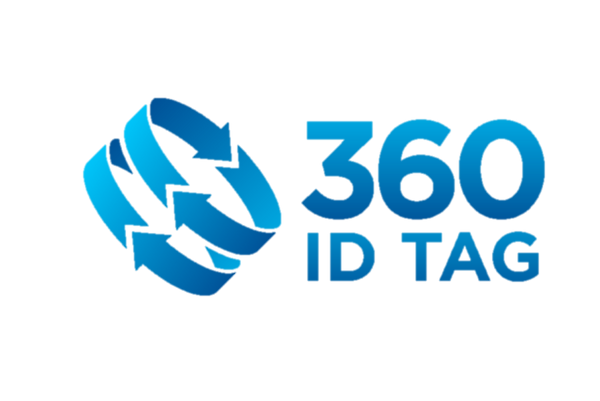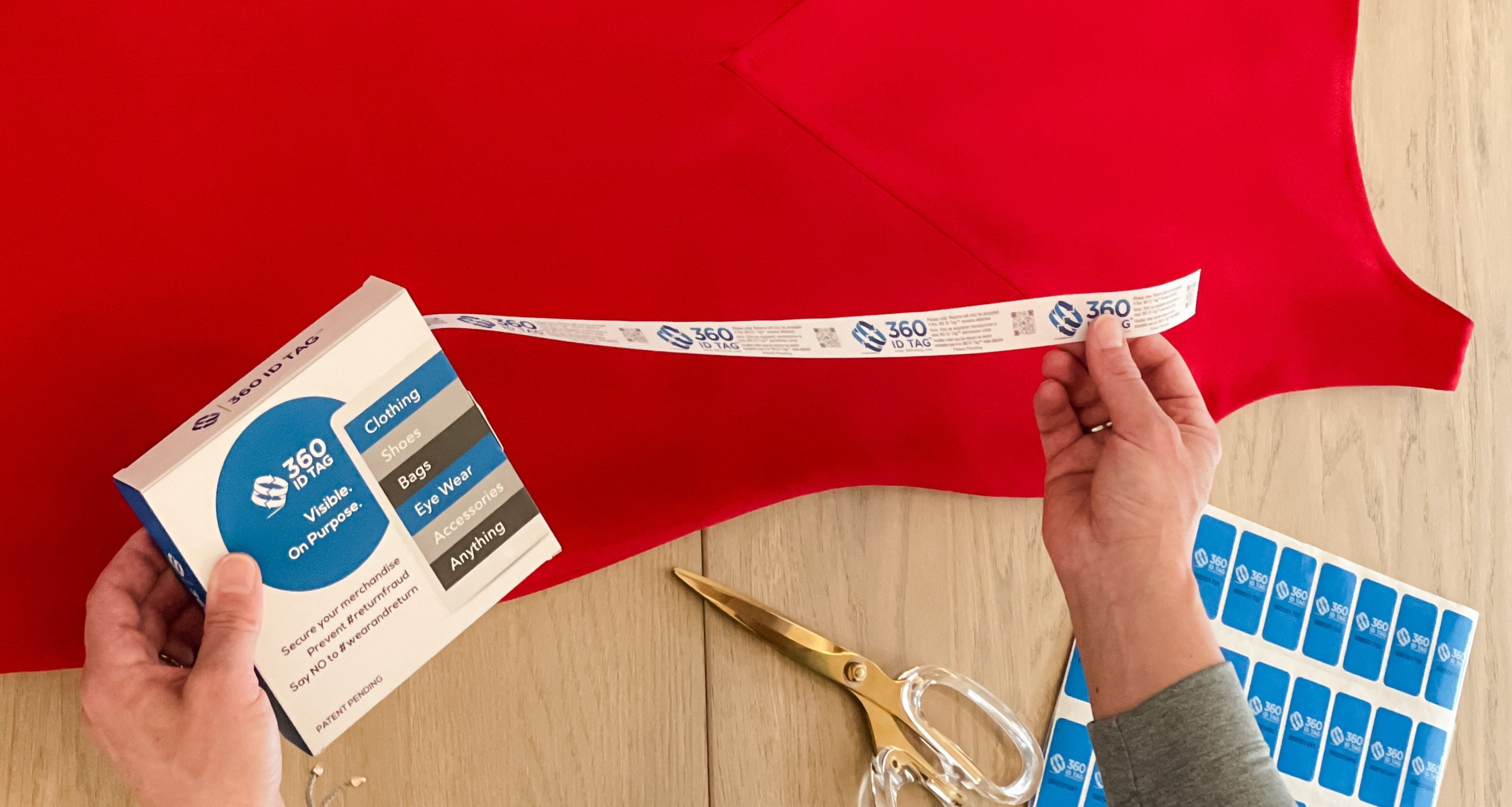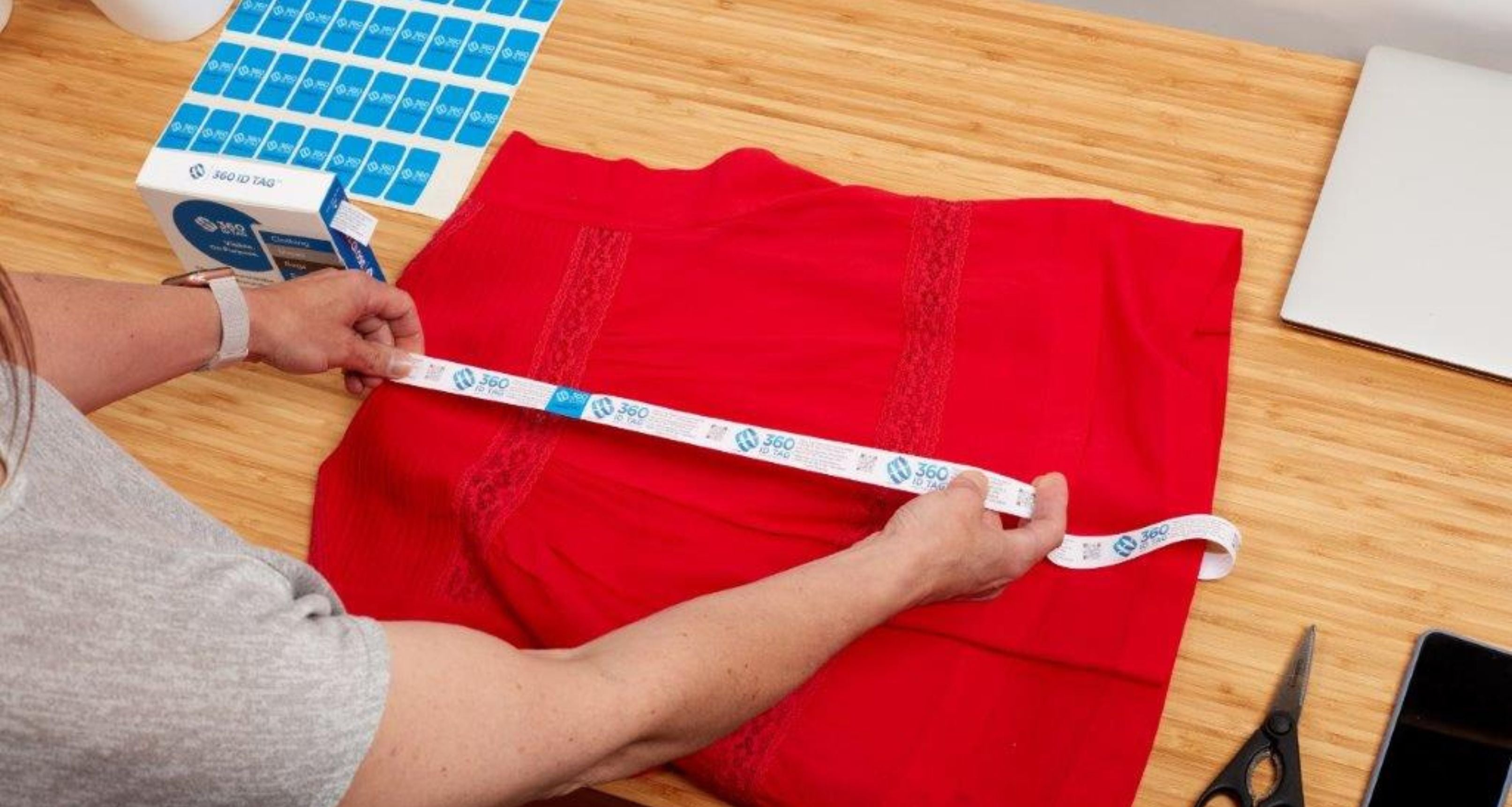
THE TAG BLOG
The rise of fraudulent returns and how to prevent them
THINK WEAR AND RETURN, WARDROBING, SNAP AND SEND BACK AND COUNTERFEIT PRODUCT SWITCHES
FedEx predicted that e-commerce would rise from generating 50 to 100 million packages annually in the US by 2026. It got us thinking about the impact this rise will have on returns. If the National Retail Federation (NRF) reports that 30% of all online purchases are returned, this will total 33 million packages annually. More troubling, for those of us in e-commerce, is the statistic that 8% or 4.16 million of these returns are fraudulent.
The environmental impact alone will be staggering

Preventing items sold online from going out for a night on the town and being returned. Shown here is the Classic Loop Pack - 22mm.
SO WHAT'S THE PROBLEM WITH RETURN FRAUD?
Concerning e-commerce, what happens to the 33 million expected returns during the 30-day, or sometimes 60-day return window (up to 4 months during holidays)? The item sold has traveled far and wide, possibly to another country, been in the hands of the buyer, sometimes for weeks, and then travels back to you.
How are we to know where the item has been during that time, what parties did it attend, or whose Instagram account it got posted to for an 'outfit of the day'?
These return fraud practices have become so common that they now have hashtags #snapandsendback #wearandreturn #wardrobing and have caught the eye of companies like ASOS who track social media accounts and ban serial returners.
Curtailing these increasingly brazen consumer behaviors involving fraudulent returns must be top of mind for those in the apparel business like I am on ebay. The anonymity of online shopping has emboldened consumers to behave, unlike in a retail store where face-to-face with a store associate puts a different perspective on deception.
Reminding me how easy wear and return or wardrobing can be was a safety pin attached to an item I purchased online. The sweater was supposedly new, hopefully unworn, but this little safety pin attached the label, so I can't be 100% sure. Take a look and be the judge! It is common for return fraud scammers to seek out safety pin tags because the original label is easy to reattach with no tampering evidence.
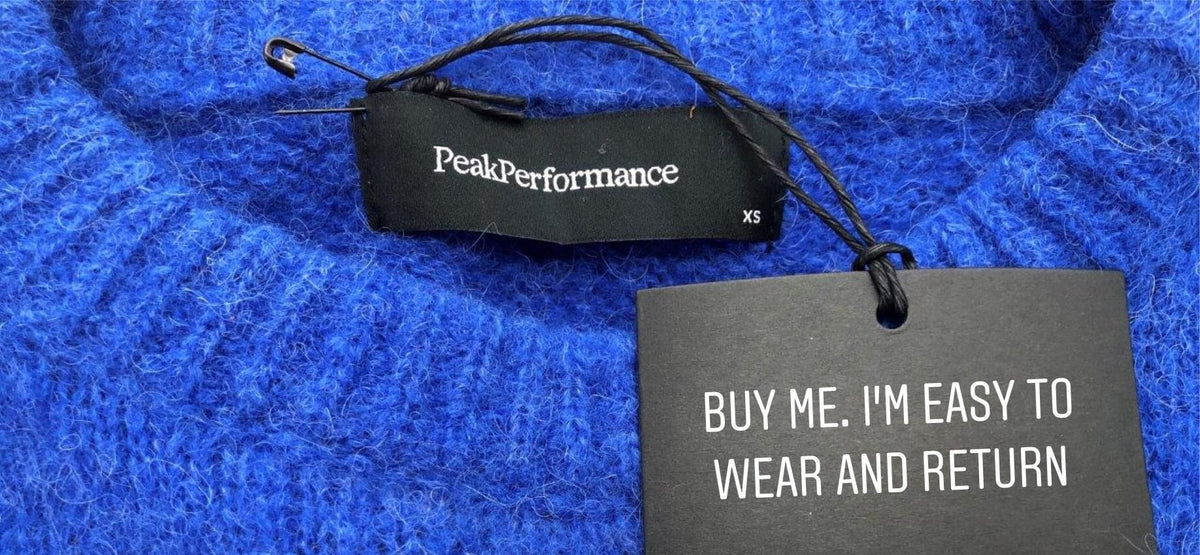
Serial returners seek out safety pin tags as they can easily put the label back on to return the item
SERIAL RETURNERS HAVE MANY TRICKS
Manufacturers add to this uncertainty by using these types of designer tags attached with pins or dainty ribbons looped around the item's label. Non-tamper evident tags are a dream come true for would-be return fraudsters or serial returners. Who would ever know if they wore the item or not, other than the perpetrator themselves... and maybe their Instagram followers?
Even items tagged with a traditional plastic barb aren’t safe from being worn and fraudulently returned. Abusing the returns honesty system can be done with a 1000 barb tagging gun kit purchased on Amazon for $4.69 plus $0.99 shipping. Retagging allows the dishonest buyer to repeatedly replace tags that have been cut off for just half a penny a time.
WHAT RETURN FRAUD STRATEGY TO EMPLOY INSTEAD
It took us accounting for all the scenarios of returns abuse to design the 360 ID Tag. We wanted to create a flexible system where the return tag material can be cut to length and secured with a tamper-evident security seal. Buyers also can't be armed with a supply of 360 ID Tags to replace the one cut off and falsely claim they did not wear it. The additional security feature of unique serial numbers on the seals stops this return fraud practice and allows you to cross-check what you sent out is what you receive back.
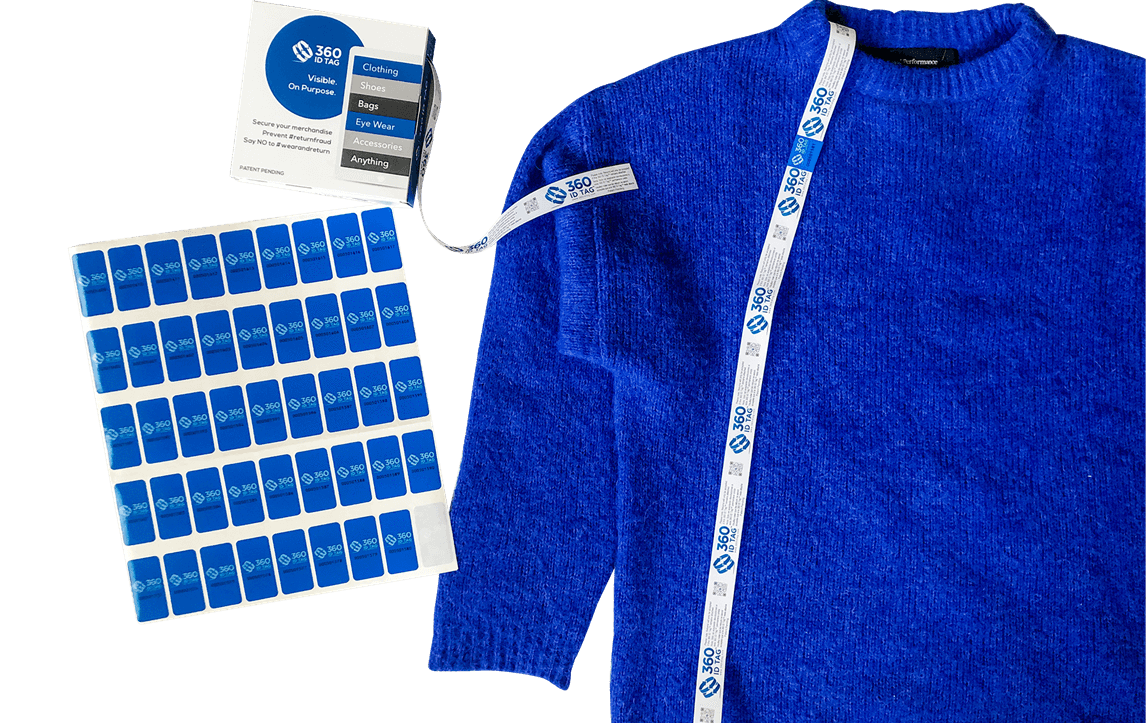
Clothing with the anti-return fraud 360 ID Tag can still be tried on for fit. Shown here is the Classic Loop Pack - 22mm.
Counterfeit product switches are just another aspect of fraudulent returns that are becoming easier to pull off, as was highlighted in a recent Marketplace investigation due to the proliferation of fakes on Amazon, AliExpress, eBay, Walmart, and Wish. By taking proactive steps against consumer abuse, sellers can control their merchandise because the only buyers backing away from secure return tags are scammers looking to commit fraud.
What of items that don't have traditional tags or are pre-owned and no longer have tags? Sneakers are an excellent example of a product that usually lacks visible tags and with the secondhand market for sneakers on the rise how can these types of products be protected against return fraud? Just by adding a simple, low-cost return tag, items no longer become a target for return fraud like wear and return or counterfeit product switches.

Preventing items sold online from being worn and returned. Shown here is the Compact Loop Pack - 10mm.
Want to talk return tags, have questions, or need some advice? Add a comment below, or send me a message at info@360idtag.com, and I’ll be happy to help you out.
CHELSEA DUHS - FOUNDER 360 ID TAG
Find the right 360 ID Tag pack for your business
We offer a variety of 360 ID Tag packs, with different combinations of return tag material and tamper-evident security seals. You can also create a custom combination to fit your specific needs. Browse our 360 ID Tag products and select the return fraud solution that best suits the types of products you sell online.
LATEST ARTICLES
Wardrobing 2025: How E-Commerce Is Fighting Back Against Return Fraud
E-commerce returns are expected to reach $850 billion in 2025, with nearly one in ten proven to be fraudulent. As shoppers demand free, flexible returns, retailers are struggling to combat costly behaviors like wardrobing—buying, wearing, and returning items as “unused.” The NRF 2025 Retail Returns Landscape reveals that 45% of consumers admit to bending the rules, highlighting the urgent need for visible, tamper-evident solutions. The 360 ID Tag gives retailers the proof they need to distinguish honest returns from abuse—protecting profit margins while preserving a seamless customer experience.
View DetailsWardrobing: how e-commerce merchants can combat return fraud
👗 Wear. Post. Return. It’s called wardrobing—and half of all retailers are still battling it in 2025. Our latest blog breaks down why this return fraud continues to thrive and how businesses can finally put a stop to it.
View DetailsTackling Fraudulent Returns: Survey Confirms Wardrobing as the #1 Culprit
Today, return fraud has evolved into a costly and ongoing challenge for businesses. Wardrobing, where customers buy merchandise, use it briefly, and then return it for a full refund, is particularly disruptive. Secure Authentication Brands recently conducted a survey to understand the impact of return fraud and gather insights from business leaders on their most pressing concerns. Here's what we found and how our anti-return fraud tagging solution is helping companies turn the tide.
View Details
